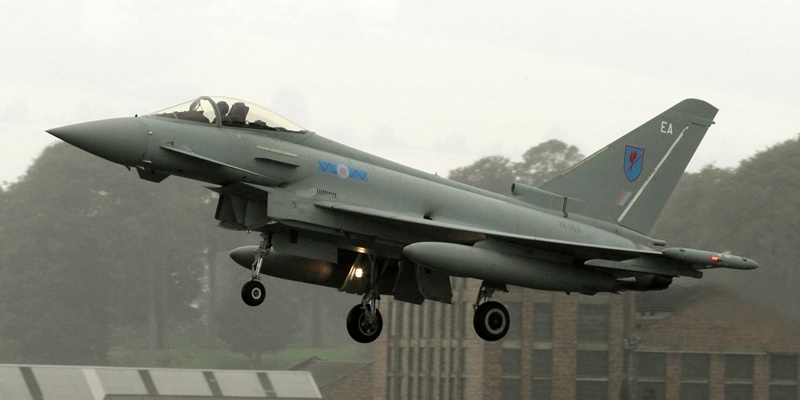With a terrorist attack on UK soil still deemed to be “highly likely”, The Courier understands the proximity of RAF Leuchars to some of the nation’s most sensitive potential targets could be enough to save it from the chop.
The ability of the Fife base to quickly intercept any 9/11-type airborne terrorist attacks could be key to securing the base’s future. Fast jets could, for example, be at Grangemouth oil refinery in a matter of seconds. Typhoons from Leuchars could reach the Torness nuclear power station in under one and half minutes.
With RAF Lossiemouth in Moray also under threat, senior officials are thought to be attaching great significance to Leuchars’ geographical advantage.
An announcement on which base faces the axe has been promised by July 19 at the latest.
While campaigners insist both Scottish bases should be saved, it has been suggested the pendulum could be swinging in favour of Leuchars.
“The current terrorism threat facing the UK is severe,” a source close to the UK Government told The Courier. “That means an attack is highly likely and thought is being given to the location of ‘tier one’ risk targets. Many of those in the northern half of Britain are within a very few minutes’ flying time of Leuchars.”
The Fife base is home to the quick reaction alert (QRA) service. While this routinely involves heading off unwanted incursions into UK air space from foreign aircraft, usually from Russia, crews are also ready to deal with far more sinister threats.
“QRA really has two aspects, the first of which involves reacting to incursions into the northern half of UK airspace which can be seen on radar and relatively easily dealt with realistically from any base,” our source said.
“However, the more critical role would involve a 9/11-type scenario, when a craft is in UK airspace quite legitimately and a threat very suddenly materialises. In such a case every second would count and Leuchars has a clear advantage.”
Other tier one risk targets close to Leuchars include Edinburgh city centre, the Faslane nuclear submarine base and the Hunterston B nuclear power station.
Continued…
Campaigners have consistently said the case to retain RAF Leuchars is compelling something reinforced by North East Fife MP Sir Menzies Campbell in a letter to defence secretary Liam Fox.
He wrote the base’s “proximity to more than four million people in Scotland and to highly sensitive installations such as Torness nuclear power station, Faslane nuclear submarine base and Grangemouth oil refinery is significant.
“It means fighter aircraft scrambled in the event of an emergency can be overhead and engaged with any target in a matter of a few minutes.”
With al Qaida pledging revenge attacks on the US and UK in the wake of the slaying of Osama bin Laden, Sir Menzies is keen to highlight the “crucial” role of RAF Leuchars.
“The national security strategy clearly states that the threat of an international terrorist attack on the UK is at the top of the identified risks,” he said. “The Home Office has concluded that an attack is ‘highly likely.’ The role of RAF Leuchars has therefore never been so important.”
Sir Menzies said any 9/11-style threat on sensitive installations in the northern half of the UK would clearly be best dealt with by Fife-based crews.
“Aircraft from RAF Leuchars have successfully intercepted Russian aircraft probing our defences on more than 50 occasions since 2005,” he continued in his letter to Dr Fox. “Leuchars is also capable of intercepting non-military aircraft, whether hijacked or not.”
Sir Menzies also highlights the “optimal” flying and weather conditions at Leuchars and praises the “exemplary professionalism” of staff at the base.
“The reasons for providing air defence for the northern half of the UK are the same today as they were when it was first given this role,” he wrote. “Closure would increase the risk to our citizens.”
Quite apart from the defence case, campaigners are also continuing to stress the impact of closure on the economy and communities of Fife.
Fife Council warns the loss of Leuchars would cost the region some £60 million. Meanwhile, 2000 jobs could be lost, schools would close and the housing market would be hit.
